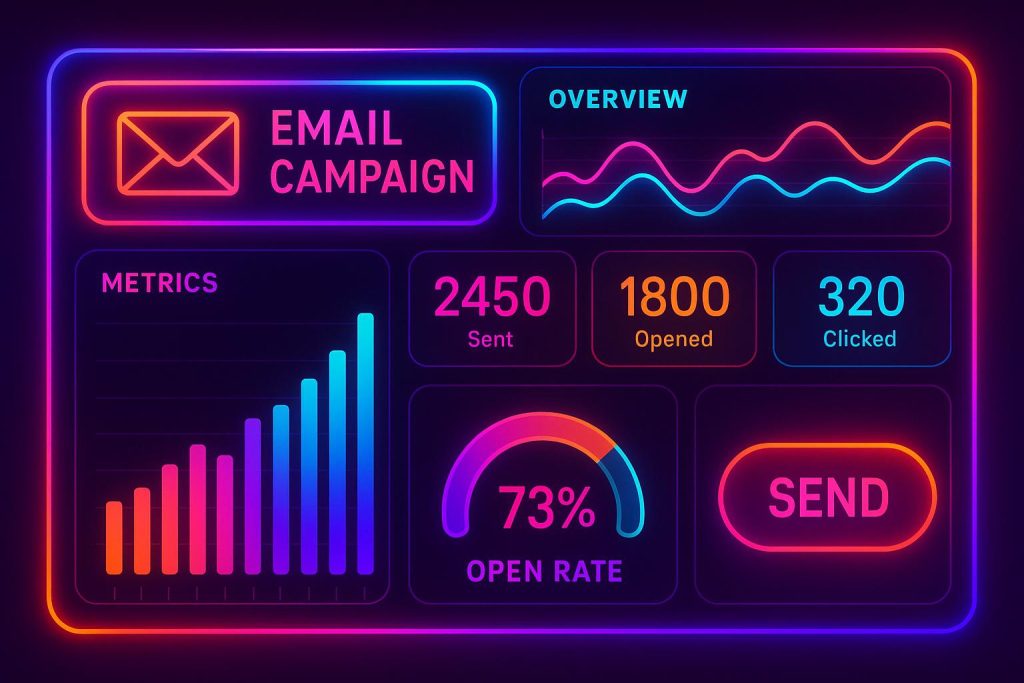Listen to the article
As email marketing in 2025 demands more automation, AI, and multi-channel support, Mailsoftly stands out as a cost-effective, user-friendly alternative to Campaign Monitor, offering enhanced deliverability and seamless migration support for businesses seeking modernised marketing tools.
As email marketing evolves rapidly in 2025, many businesses reconsider their choice of platforms, particularly those using Campaign Monitor. Known for its professional design, user-friendly templates, and solid reporting, Campaign Monitor has traditionally served marketers well. However, its limitations in automation depth, AI capabilities, and pricing flexibility have pushed companies to explore alternatives better aligned with modern needs.
The email marketing landscape today demands more robust AI-driven segmentation, omnichannel automation spanning email, SMS, and WhatsApp, along with transparent pricing and deliverability tools. These shifts reflect the broader trend towards personalised, data-driven marketing strategies. According to industry insights, there are several standout alternatives to Campaign Monitor that meet these evolving demands.
Among these platforms, Mailsoftly emerges as a particularly compelling option for small to medium-sized businesses (SMBs), agencies, and content creators. It combines AI-powered email template generation, advanced segmentation, and multi-channel messaging capabilities at a competitive price point, often half the cost of traditional players. Notably, Mailsoftly offers free migration and setup support, and includes deliverability optimisation features like Cloudflare authentication in its paid plans, addressing common migration challenges such as list migration issues and domain authentication risks. This makes it appealing for businesses seeking to transition smoothly without sacrificing marketing sophistication.
Other platforms also bring unique strengths. Mailchimp remains a popular all-in-one marketing tool with extensive templates and ecommerce integrations, though its pricing can become prohibitive for larger contact lists and it lacks the personalised support Mailsoftly provides. ActiveCampaign is acclaimed for its deep automation workflows and CRM integrations, suitable for organisations needing advanced automation but potentially overwhelming for smaller teams. Klaviyo continues to dominate ecommerce segments, particularly Shopify stores, due to its product feed integrations and behavioural automations, though it tends to be expensive as lists grow. For businesses prioritising webinar hosting, GetResponse offers a specialised solution combining marketing funnels and online events seamlessly. Similarly, ConvertKit attracts creators focusing on subscription monetisation and automations.
Global outreach efforts find a good match with Brevo (formerly Sendinblue), which offers multilingual campaign support and SMS marketing at affordable entry prices, making it a strong choice in Europe and beyond. AWeber remains a solid option for beginners, emphasising deliverability and straightforward automation, albeit with less AI sophistication. For those seeking budget-friendly simplicity, MailerLite provides ease of use and value pricing, though without the advanced AI features present in more modern platforms.
Choosing the right alternative depends greatly on individual business priorities. Key considerations include the need for AI-driven personalisation, multi-channel support (SMS, WhatsApp alongside email), pricing scalability, and the level of dedicated customer support. For companies where AI, deliverability, and support are paramount, Mailsoftly strongly fits the bill. For others, factors like event-driven marketing (Constant Contact) or deep CRM integration (HubSpot Marketing Hub) may tip the scale.
Migrating from Campaign Monitor is often a major concern for businesses, but the market now offers smoother pathways. Many top alternatives, including Mailsoftly, provide free migration services and onboarding support to ease technical hurdles. Ensuring proper domain authentication during setup—covering SPF, DKIM, and DMARC—is essential to maintain or improve deliverability. Additionally, platforms offering guided onboarding help address learning curves, supporting users to swiftly adopt new tools and features.
Looking ahead, the future of email automation lies in AI-first platforms that not only personalise messages dynamically but also provide self-optimising campaign management, reducing manual A/B testing. The rise of omnichannel messaging as a standard practice will further integrate communication via email, SMS, and messaging apps, offering marketers richer engagement opportunities.
Businesses wanting to switch from Campaign Monitor benefit from several advantages: reduced costs through flexible pricing, smarter targeting via AI automation, enhanced customer support from challenger brands, higher deliverability through built-in authentication tools, and scalability across multiple channels.
For those planning a transition, a recommended approach involves auditing current campaigns and contact lists to identify gaps in automation, pricing, or deliverability. Next, testing several alternatives via free trials can help identify the best fit. Migrating data carefully, authenticating domains, and launching test campaigns complete the process, with ongoing monitoring ensuring successful adoption.
In summary, while Campaign Monitor remains a solid platform, 2025’s competitive landscape offers numerous alternatives suited to diverse business needs. Mailsoftly stands out for SMBs seeking cost-effective AI-powered automation and strong deliverability support. Ecommerce brands may lean towards Klaviyo, creators often favour ConvertKit, and organisations with specific needs might select platforms like GetResponse or HubSpot. Thoughtful evaluation of automation depth, pricing models, and deliverability is key before making a switch.
📌 Reference Map:
- Paragraph 1 – [1], [4]
- Paragraph 2 – [1], [2], [6]
- Paragraph 3 – [1], [5], [7]
- Paragraph 4 – [1], [2], [3]
- Paragraph 5 – [1], [5], [7]
- Paragraph 6 – [1], [4], [6]
- Paragraph 7 – [1], [4], [7]
- Paragraph 8 – [1], [2], [5]
- Paragraph 9 – [1], [2], [4]
- Paragraph 10 – [1], [2], [7]
Source: Noah Wire Services



